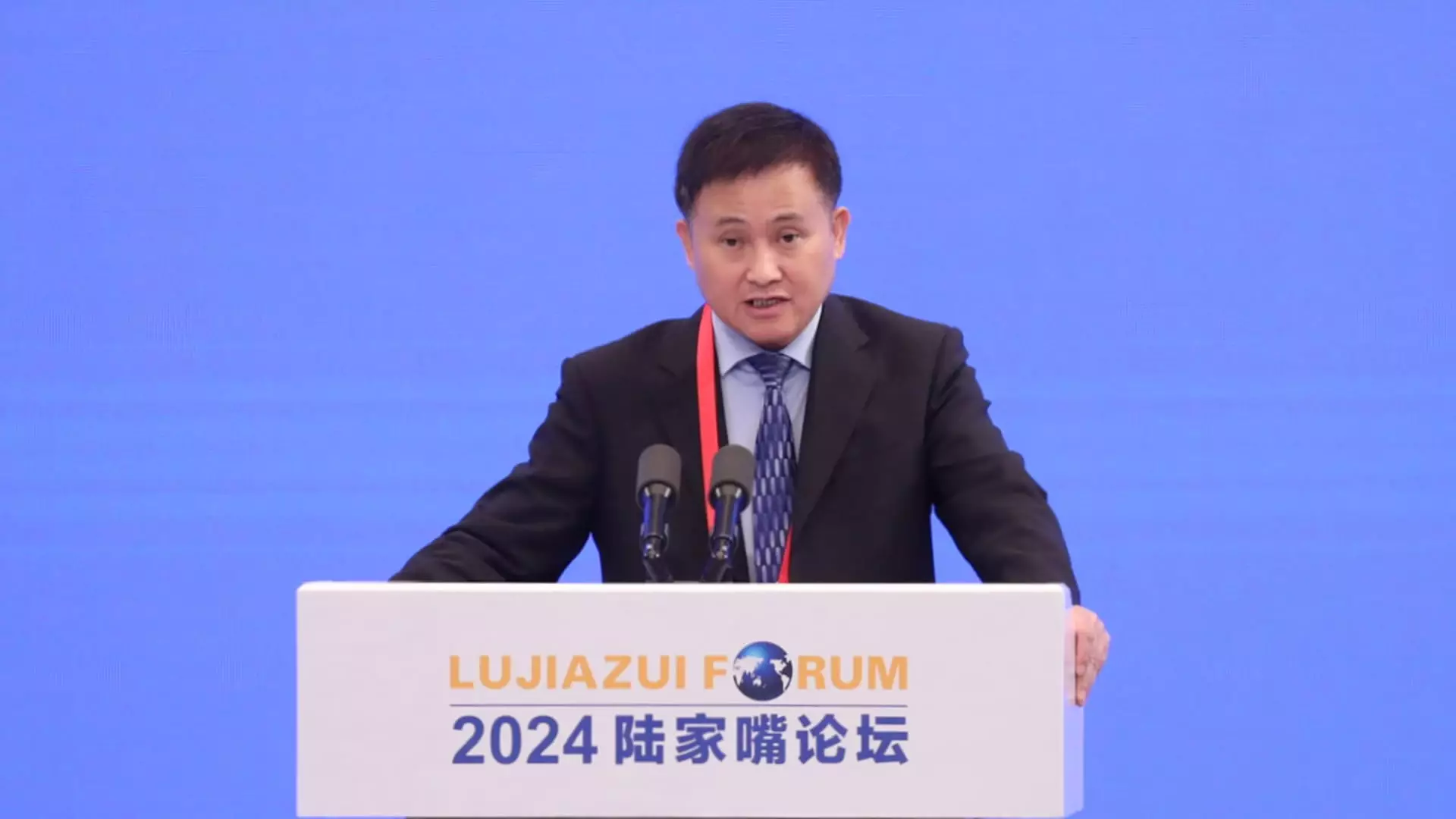In a significant monetary policy shift, China’s central bank, the People’s Bank of China (PBOC), has announced a reduction in the reserve requirement ratio (RRR) by 50 basis points. This decision, articulated by Governor Pan Gongsheng during a recent press conference, highlights a responsive measure aimed at injecting liquidity into the economy. The RRR represents the amount of capital that banks must hold in reserve before they can lend, and a reduction in this figure enhances the banks’ capacity to extend loans, thereby stimulating economic activity.
While Governor Pan provided a hint regarding the timing of these cuts, he stopped short of specifying an exact date. He mentioned that changes would occur in the near future, and depending on economic conditions, supplementary cuts between 0.25 to 0.5 basis points might be considered by year-end. This provisional nature of the announcements indicates the PBOC’s cautious approach, influenced by both domestic performance and global economic factors.
In addition to the RRR, the PBOC plans to reduce the 7-day repo rate — a crucial mechanism through which the central bank manages short-term liquidity — by 0.2 percentage points. Following the initial announcements, China’s 10-year government bond yield dropped to an unprecedented low of 2%, signaling market responsiveness to anticipated increases in liquidity. Notably, Governor Pan also alluded to a potential reduction in the loan prime rate, though he refrained from clarifying whether this pertained to the one-year or five-year loan terms.
The interconnectedness of these rates underlines China’s differentiated approach to monetary policy management, distinguishing it from the tighter, more conventional methods taken by central banks like the U.S. Federal Reserve. This divergence is particularly salient in the context of current economic pressures; the PBOC appears to be using interest rate adjustments as part of a broader strategy to combat stagnation and stimulate consumer and corporate spending amidst a backdrop of deflationary concern.
China’s decision to ease its monetary policy comes at a critical juncture, marked by sluggish economic growth partly attributed to a prolonged slump in the real estate sector and diminishing consumer confidence. The need for intervention is underscored by recent calls from economists advocating for stimulus measures, particularly on the fiscal side, to rejuvenate the economy. In many ways, the catalyst for this monetary easing was the recent interest rate cut by the U.S. Federal Reserve, which has effectively opened the door for similar moves in China without the threat of significant capital outflows.
Historically, high-level announcements regarding monetary policy are carefully crafted and disclosed through official channels, rather than during press conferences. Governor Pan’s decision to present this information publicly signifies a shift in strategy designed to bolster confidence among both market participants and the public. This rare engagement reveals the PBOC’s desire to be seen as proactive in addressing economic challenges.
Looking ahead, the PBOC’s strategy appears committed to navigating complex economic waters with an eye toward domestic demands and broader growth targets set by the government. While maintaining stability in specific loan prime rates, the bank has simultaneously adjusted other short-term rates to ensure a steady influx of cash into the banking system — an indication of its intent to support a recovery in consumer spending and business investment.
As China’s economy grapples with various internal and external pressures, the effectiveness of these measures will hinge on their timing and execution. By signaling a readiness to adapt monetary policy in response to ongoing developments, the PBOC is not only addressing immediate economic concerns but is also fostering an environment of resilience and recovery in the long term.
The strategic easing of monetary policy by the PBOC represents a multi-faceted approach to counter economic headwinds. By reducing the RRR and considering adjustments to interest rates, the central bank is poised to safeguard China’s economic health, further reinforcing its commitment to sustaining growth amidst uncertainty. As the global landscape continues to evolve, further scrutiny and adaptability of these policies will be crucial for the PBOC’s success in stability-driven governance.

